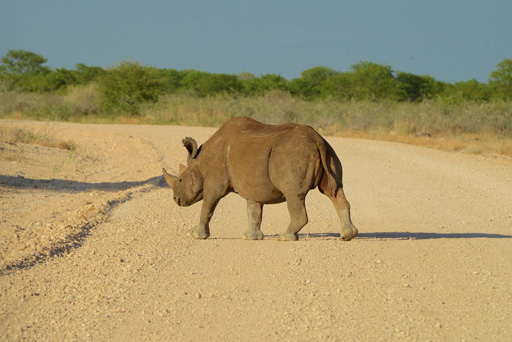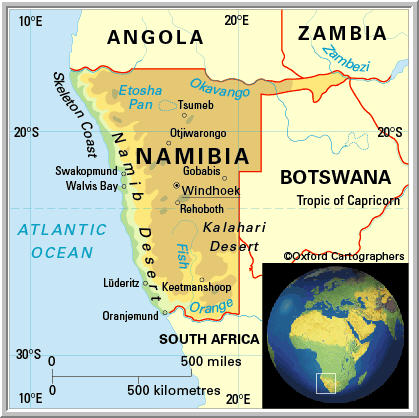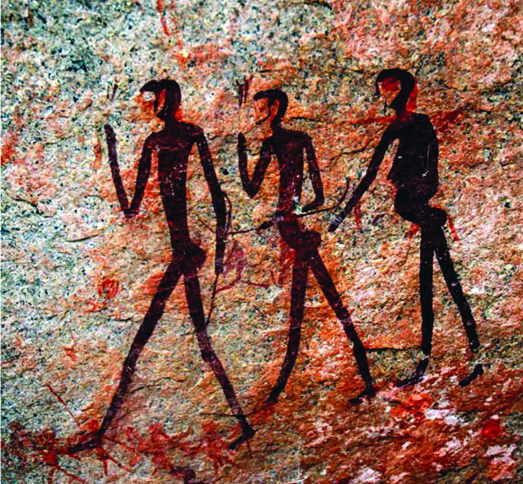Public Holidays in Namibia are determined by an Act of Parliament and the existing Public Holiday's Act 1990, (Act 26 of 1990), provides for the following holidays, tabulated according to their dates and days:
| Date 2019 |
Holiday |
|
1st January |
New Year's Day |
|
21st March |
Independence Day |
|
19th April |
Good Friday |
|
22nd April |
Easter Monday |
|
1st May |
Workers Day |
|
4th May |
Cassinga Day |
| 25th May | Africa Day |
| 30th May | Ascension Day |
| 26th August |
Heroes' Day |
|
10th December |
International Human Rights Day |
|
25th December |
Christmas Day |
|
26th December |
Family Day |
According to the Public Holidays Act, 1990 (Act 26 of 1990) the Monday, following a Sunday which is a public holiday, shall also be a public holiday, unless the Monday is already a public holiday.
Further note that the Embassy closes on all the above public holidays including those observed in Sweden.
OBSERVANCE DAYS 2017, BUT NOT PUBLIC HOLIDAYS
| DATE | DAY | OBSERVANCE DAY |
| 9th February | Saturday | Constitution Day |
| 16th June | Sunday | Day of the African Child |
| 28th September | Saturday | Day of the Namibian Child |
| 4th October | Friday | United Nations Day |
Economy
At independence in 1990, Namibia inherited an economy characterised by a narrow industrial base and heavy dependence on the production and export of primary commodities such as beef, fish and minerals. In order to redress this structural imbalance, Government committed itself towards a strategy of economic diversification aimed at creating dynamic industrial and service sectors through increased manufacturing activities, promotion of value addition to locally produced raw materials and the modernisation of our financial and ICT sectors.
Towards this end, Namibia implemented free-market liberal policies such as enacting a Foreign Investment Act and an Export Processing Zone (EPZ) regime as well as employing favourable incentives for exporters and manufacturers with a view to attracting foreign direct investment.
Mining and energy remains a mainstay of Namibia’s economy, being the third largest contributor to the GDP. Namibia is the fourth largest exporter of non-fuel minerals in Africa and the world’s fifth largest producer of uranium. Rich alluvial diamond deposits make Namibia a primary source for gem-quality diamonds. Namibia also produces large quantities of lead, zinc, tin, silver, and tungsten. In 2015 the mining and quarrying industry contributed 12.5% to the Gross Domestic Product.
Agriculture contributed around 3.2% to the GDP for the year 2015. In 2007 the figure was 5.3, which illustrates its gradual decline over the years. The agricultural sector directly or indirectly supports over 70% of the total population of Namibia, and its main sources of income are: (i) livestock, beef and mutton production, which accounts for about 70-80% of the gross agricultural income; and (ii) agronomic production which accounts for the remaining 20-30% gross agricultural income. The livestock population of Namibia is about 2.5 million cattle, 2.4 million sheep and 1.8 million goats. The major cattle breeds are the well adapted indigenous Sanga as well as Bonsmara, Afrikaner, Brahman and Simmentaler breeds. Cattle farming is concentrated in the northern and central parts of the country where a variety of breeds freely roam the nutritious grasslands, whilst sheep farming is mainly in the southern part of the country. About 80% of Namibia's beef and mutton is exported to South Africa and the European Union.
Namibia's climate is mainly suitable for dry-land crop production, with the exception of areas in the north, north-eastern, and southern parts of the country where irrigation is possible in areas bordering perennial rivers and where dams feed irrigation schemes. The main crops grown are maize, wheat, sorghum, pearl millet, grapes, dates and a variety of beans. Namibia remains a net importer of basic food crops particularly from South Africa and in 2005 the country imported 50% of the cereals it required. To address the dependency on imports, the government is acquiring land from traditional authorities, mainly from areas where irrigation is possible, for crop production under the Green Scheme Programme. In terms of the Green Scheme Policy, government enters into a public private partnership (PPP) agreement with a private investor who is given the mandate to farm the land, with the government being in charge of providing bulk services i.e. access to roads, water and electricity. The government's land reform policy is shaped by two key pieces of legislation: the Agricultural (Commercial) Land Reform Act 6 of 1995 and the Communal Land Reform Act 5 of 2002. The government remains committed to a "willing seller, willing buyer" approach to land reform and to providing just compensation as explicitly stipulated and directed by the Namibian constitution.
Namibia’s fishing industry ranks among the world’s top 10 in the international fishing industry and contributed to the 2015 GDP by 2.9%. This is due to the cold Benguela current which creates an especially beneficial eco-system, with year-round temperate conditions. Namibia’s 1500 kilometer-long coastline has a marine produce harvested by a flourishing fishing and fish-processing industry. Some of the more common fish available in quantity for export are horse mackerel and hake. Namibian horse mackerel contains only three to eight percent body fat, making it both healthy and highly nutritional as well as a vital staple food source for many nations. Namibia’s Hake products are of superb quality and in great demand for the catering and retail markets. Other marine exports include rock lobster; crab; oysters; kabeljou; monk; tuna; pilchards and seaweed.
The tourism sector is the fastest growing in the economy in terms of contribution to GDP. In 2015 its constribution ended at 3%, and that number is expected to rise significantly. Tourists to Namibia are increasingly attracted by the country’s unique mix of peace, political stability, cultural diversity, and geographic beauty. Tourism in Namibia has had a positive impact on resource conservation and rural development.
Namibia’s main export commodities include copper, cut diamonds, gemstones, granite, lead products, marble, uranium and zinc and manufactured products. The main export partners are South Africa, the United Kingdom and the United States of America. The main import commodities include food products, petroleum products, pharmaceuticals, plastic products, rubber, spare parts, textiles and knitwear and timber. The majority of the imported goods come from South Africa, the Netherlands and the United Kingdom.
In addition to our membership in the Southern African Development Community (SADC), Namibia is a member of the South African Customs Union (SACU), a customs union comprising Botswana, Lesotho, Swaziland and South Africa. Namibia has been a member of the World Trade Organization since its inception in 1995 and has been a strong advocate of the Doha Development Agenda. Namibia also is a member of the International Monetary Fund and the World Bank. Furthermore, Namibia is currently engaged in negotiations aimed at concluding the EU-ACP Economic Partnership Agreement.
Key Economic Sectors:
• Agriculture
• Fisheries
• Manufacturing
• Mining/Energy
• Tourism
• Service Industry
Key Economic Indicators:
GDP (2015): U$11.546 billion
GDP growth (2015): 5.3% (2014: 6.5%)
GDP per capita (2015): U$4.7
Inflation (2015): 3.4%
(Sources: Bank of Namibia, Quarterly Bulletin, September 2008; Ministry of Finance, Namibia; Central Bureau of Statistics, Namibia; United Nations World Economic, Development Indicators and The World Bank)

Conservation is a cornerstone of the Namibian experience. Namibia was the first African country to incorporate protection of the environment into its constitution, and the government has reinforced this by giving its communities the opportunity and rights to manage their wildlife through communal conservancies. Today, over 42% of Namibia’s surface area is under conservation management. This includes national parks and reserves, communal and commercial conservancies, community forests, and private nature reserves. After Independence in 1990, visionary conservationists in the field and the Ministry of Environment and Tourism enacted policy changes that allowed rural communities to benefit from wildlife by forming conservancies. In 1998, the first four conservancies were registered.
Today, 65 registered conservancies embrace one in four rural Namibians. A sense of ownership over wildlife and other resources is encouraging people to use their resources sustainably. Wildlife is now embraced as a complimentary land use method to agriculture and livestock herding. People are living with wildlife, including predators and large mammals, and are managing their natural resources wisely. They are also reaping the benefits. In 2009, community-based natural resource management generated over N$ 42 million in income to rural Namibians. All the while, the program is facilitating a remarkable recovery of wildlife. Namibia now boasts the largest free-roaming population of black rhinos and cheetahs in the world and is the only country with an expanding population of free-roaming lions. Namibia’s elephant population has increased significantly from 7,500 in 1995 to over 20 000 individuals in 2016. This remarkable turnaround has led some to call Namibia’s conservation efforts “The greatest African wildlife recovery story over told.”
Area:
825 418 square kilometers, 35th largest in the world. Namibia is approximately 3.37 times larger than the United Kingdom of Great Britain and Northern Ireland, and around 2 times larger than Sweden.
Regions:
The country is demarcated into 14 regions; Caprivi, Erongo, Hardap, Karas, Kavango West, Kavango East, Khomas, Kunene, Ohangwena, Omaheke, Omusati, Oshana, Oshikoto and Otjozondjupa.
Cities:
Windhoek (Capital City, Khomas region), Rundu (Kavango East region), Walvis Bay (Erongo region,), Oshakati (Oshana region), Swakopmund (Erongo region), Katima Mulilo (Caprivi region), Grootfontein (Otjozondjupa region), Okahandja (Otjozondjupa region), Otjiwarongo (Otjozondjupa region), Rehoboth (Hardap region), Gobabis (Omaheke region), Lüderitz (Karas region), Keetmanshoop (Karas region), Omuthiya (Oshikoto region).
Climate:
Arid and semi-arid. Hottest months, November to February (average temperatures, 20-36ºC). Colder months between May and August (average temperatures, 3-10ºC in the mornings and 18-22ºC during the day). The dry season is usually between April and October, and the rainy season usually November to March.
Topography:
Namibia has contrasting landscapes. The oldest desert in the world, the Namib Desert stretches along the whole west coast of the country, while the Kalahari Desert runs along its southeastern border with Botswana. The Skeleton Coast stretches from Swakopmund to the northern border.
Rivers:
Perennial rivers are found only on the country’s borders, being the Orange River on the southern border and the Kunene, Okavango, Kwando and Zambesi Rivers on the northern border.


The history of this land can be found carved into rock paintings found in the south and in Twyfelfontein, some dating back to 26,000 B.C. A long lineage of various groups including San Bushmen, Bantu herdsmen and finally the Himba, Herero and Nama tribes among others – have been making this rugged land home for thousands of years. But, as Namibia has one of the world’s most barren and inhospitable coastlines, it wasn’t until the middle of the nineteenth century that explorers, ivory hunters, prospectors and missionaries began to journey into its interior.
Beyond these visitors, Namibia was largely spared the attentions of European powers until the end of the 19th century when it was colonized by Germany. The colonization period was marred by many conflicts and rebellions by the pre-colonial Namibia population until World War I when it abruptly ended upon Germany’s surrender to the South African expeditionary army. In effect, this transition only traded one colonial experience for another. In 1966 the South West Africa People's Organisation (SWAPO) launched the war for liberation for the area soon-named Namibia. The struggle for independence intensified and continued until South Africa agreed in 1988 to end its Apartheid administration. After democratic elections were held in 1989, Namibia became an independent state on March 21, 1990. To date, Namibia boasts a proud record of uninterrupted peace and stability for all to enjoy.

